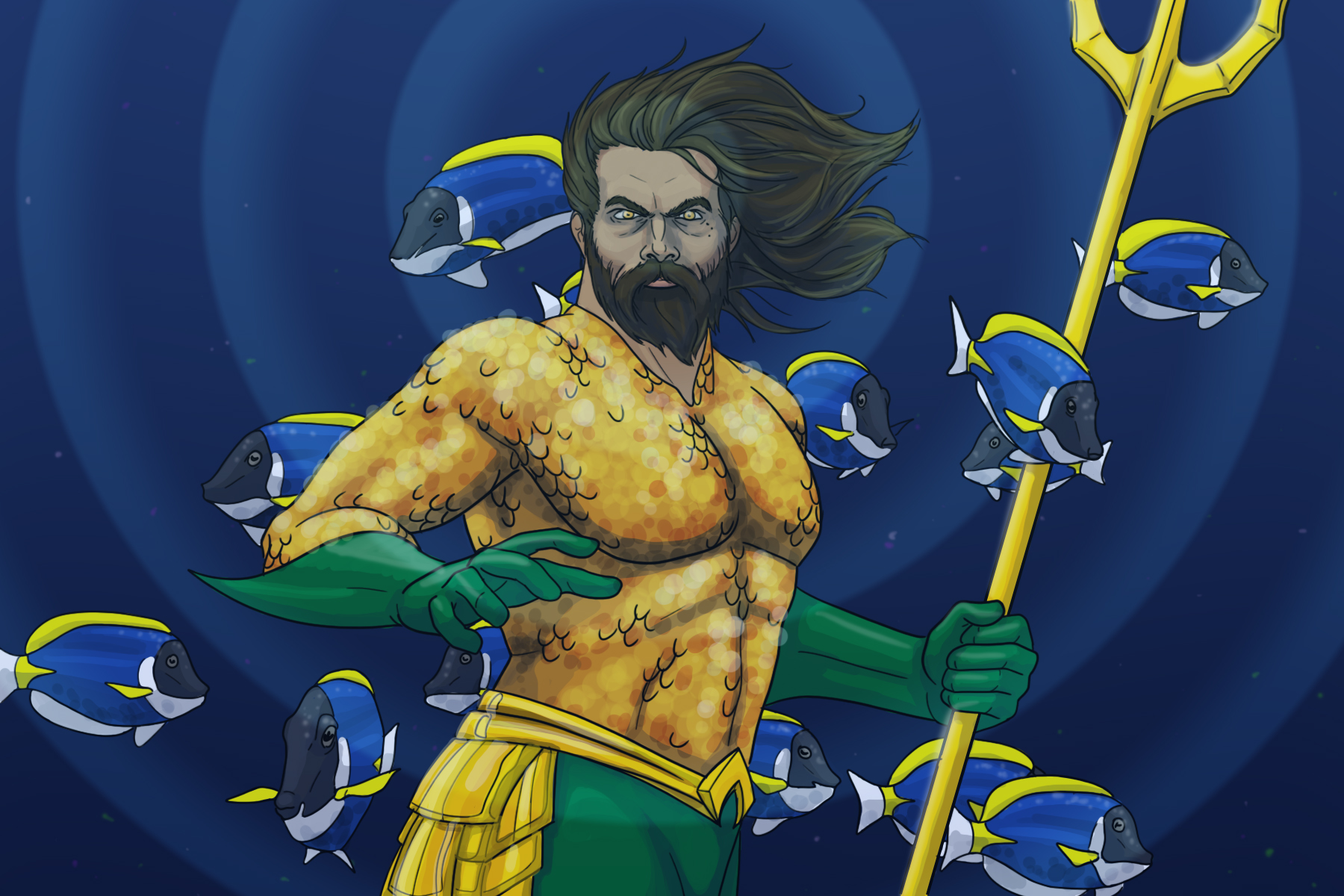Over the years, Aquaman hasn’t maintained the most gallant reputation. The underwater hero has been picked and poked on various television shows, specifically animated ones. Shows like “Spongebob Squarepants,” “South Park” and “Family Guy” have all made Aquaman out to be the laziest of heroes. But still, Aquaman has made a return, this time to the big screen, where everybody can see him in all his glory: fighting off villains, revisiting his underwater home and saving the world.
With the amount of success that DC experienced with “Wonder Woman,” it was no surprise that “Aquaman” was expected to be equally good, if not better. Despite the high box office numbers and stunning visual effects, “Aquaman” wasn’t enough to save completely save DC, but it did give them some momentum.
In his first solo film, Arthur Curry (Jason Momoa) is a bit mercurial. He goes from being an action-hungry outlaw to a toned-down man with a sense of civic duty. Throughout the film, Curry wants to help prevent a war between the seas and the surface world but feels that he isn’t qualified to do so. But with the help of Mera (Amber Heard), the future queen of Atlantis and Nuidis Vulko (Willem Dafoe), Curry’s mentor and fighting teacher, Curry is able to pull himself together to stop the bloodshed.
Unlike most superhero films, “Aquaman” features multiple villains: Orm (Patrick Wilson), the soon-to-be king of Atlantis and Arthur Curry’s half-brother, is the first. He initiates the war with the surface world, using the other underwater kingdoms to help him. Black Manta (Yahya Abdul-Mateen II), an underwater treasure hunter who and one of the many archenemies of “Aquaman,” is the other.
In some ways, the story of “Aquaman” was similar to Marvel’s “Black Panther”: two long-lost relatives claiming their right to the throne, seeking world domination at the expense of innocents. The storylines may have been similar, but “Black Panther” succeeded while “Aquaman” faltered.
Orm hates Curry because he indirectly killed their mother, Atlanna (Nicole Kidman). Because Curry’s father, Thomas (Temuera Morrison) was from the surface world, their relationship was forbidden, and Curry was an illegitimate child. Orm wants to destroy the surface world for this reason, as well as because they (we, really) pollute the ocean.
The reason for starting this war seems valid, but there is not a repetition of this idea in the story. In “Black Panther,” Killmonger wanted to get revenge because his family killed his father. The main reason Killmonger wanted to become king of Wakanda was so that he could share their resources with the world. The idea of Wakanda having a plethora of technology was made clear from the beginning and was built on throughout the movie and in the MCU.
Granted, Aquaman has only been featured within the Justice League franchise, but the Black Panther only starred in “Captain America: Civil War” before debuting in his feature film, and yet “Black Panther”’s narrative is well established.
In terms of characters and stories, Marvel is way ahead of DC. With Marvel, every film is interconnected, and the stories continue to move forward. With DC, most solo films only cover that hero’s origin story, they don’t add on to the universe, but DC wasn’t always like that. “The Dark Knight” was one of the only films that didn’t focus on the origin story. And for that reason, and many more, today, it is still one of DC’s best series.
“Aquaman” just explained his childhood and how he became who he is. No other characters from the Justice League were mentioned, and the film failed to further the DC universe as a whole.
Along with “Aquaman” failing to build connections with other characters, the chemistry between the featured ones, Curry and Mera, was unconvincing. The pair got close because Mera didn’t believe in her fiancé’s mission to destroy the surface world. The coupling of Curry and Mera was foreseeable and added nothing to Curry’s image as Aquaman.
Despite the flaws within the storyline, the film is visually stunning. Director James Wan was able to achieve what many haven’t: making a fantasy look completely real. Even today, scientists know more about space than they do about the oceans, so for Wan and his team, creating an underwater world wasn’t an easy task.
The team started off just observing how people and objects, like a trident or debris, moved underwater. Often times, actors would perform the movements while being harnessed in wire rigs, making it harder for them to fully be in character. Despite the strong effort to create certain movements, the only way a scene could look believable was through the use of CGI elements. Underwater movements took months to perfect and crafting the hair movements on the characters was one of the most laborious undertakings.
All the time and effort seemed to be worth it in the end; critics have been submitting mostly positive reviews. Still, for many, “Aquaman” was another unoriginal superhero film that looked great but was subpar in other aspects.
This time, DC nailed the special effects, but at the end of the day, it comes down to the story and how well it’s developed over time. Even with “The Dark Knight,” the special effects weren’t what made the seres memorable, and that’s the reason why it was so special: it had a great script and didn’t feel like the gimmick superhero movie.
In hindsight, “Aquaman” is another “PAM.” It’s a predictable action movie that made a splash at the box office yet left many unsatisfied. The expectations for DC have raised now that Marvel has become a superhero powerhouse, but I have a feeling that DC is just getting started.
















